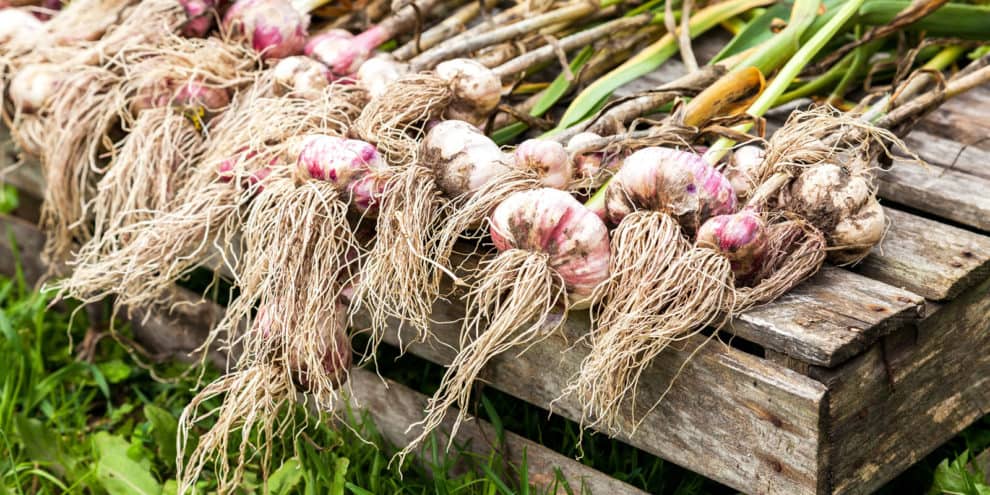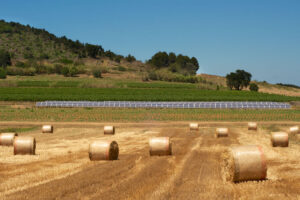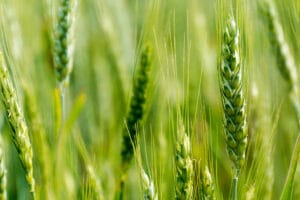From a farm that specializes in the world’s hottest peppers to pizza farms, there are some pretty incredible ways people are using their land in America. These crops don’t get much attention, since they aren’t always as popular or profitable as crops like corn or soybeans. However, while these crops might not be topping the charts anytime soon, unique crops have surprising benefits and might even make you more money than your current crops.
Garlic
Gourmet garlic has been nicknamed the ‘mortgage lifter’ for how much money it can bring farmers. Chefs and foodies are willing to pay top dollar for fresh garlic, especially for in-demand varieties.
According to a Vegetable Crops Specialist at Cornell University, garlic is a great crop for farmers looking to maximize profit per acre.
“There’s a booming market out there for fresh local garlic,” says the specialist. “Those growing it can sell every clove they produce. Elephant garlic, for example, retails for $14 a pound and produces up to 15,000 pounds per acre.” Are you seeing the dollar signs yet?
Willow
Even the most niche market can be successful if there is a demand for it. For example, willows might not be a top crop, but florists and crafters are always looking to buy these beautiful branches.
A study from the University of Kentucky found that willow growers could harvest four to five tons of shoots per acre. The retail price is around seven dollars a pound for basket weavers. That adds up to about $56,000 an acre!
Solar
When you think of a farm, you probably think corn and pigs, not giant hunks of metal.
While big companies such as Disney (who recently opened 22 acres shaped like the famous mouse to power the park) are embracing solar, it’s been slow to become popular in the land industry because of the cost and time it takes to turn a profit.
While it can be a great investment, there are a lot of things to consider about solar farming. Here are just a few questions to ask yourself:
- Do you have enough acreage? (a single megawatt of solar power requires six to eight acres)
- Does your property have the right solar exposure?
- Can you afford a long development cycle?
Solar energy can be an (extremely) slow return on investment. The rate of return is different for every landowner.
If you’d like an estimate on how long it would take for your land to turn a profit with solar energy, try this nifty Solar Calculator from EnergySage. We tried it for our Chicago offices and found out that it would take about eight years for the panels to pay for themselves.
Hemp/Marijuana
While still federally illegal, the slow legalization of marijuana has created a new market. However, this popularity has a downside. Areas like Oregon are facing a marijuana overflow, which is driving the cost of the plant down. According to state officials, 1.1 million pounds of cannabis flower were logged in the state’s database. Less than 340,000 pounds of the plant were bought and consumed. This oversupply spells trouble for growers.
This is typical with a hot new crop. The excitement and demand for something new can cause everyone to hop on board, leading to too much product and not enough buyers.
While marijuana has hit a rough patch, things are looking good for the plant’s non-psychoactive cousin, hemp. It’s currently legally grown on 26,000 acres across 19 states. This plant requires less water and fertilizer than corn. Hemp even has fans in Congress. Senate Majority Leader Mitch McConnell introduced a bill to legalize hemp just this year.
There are quite possibly too many unique crops that can be grown across America to count. Even ideas that seem outlandish (Cactus farms? Alligator farms?) are real and have the potential to turn a profit. Just because a crop is on the fringe of the land industry doesn’t mean it lacks the potential to be a star crop.
This content may not be used or reproduced in any manner whatsoever, in part or in whole, without written permission of LANDTHINK. Use of this content without permission is a violation of federal copyright law. The articles, posts, comments, opinions and information provided by LANDTHINK are for informational and research purposes only and DOES NOT substitute or coincide with the advice of an attorney, accountant, real estate broker or any other licensed real estate professional. LANDTHINK strongly advises visitors and readers to seek their own professional guidance and advice related to buying, investing in or selling real estate.










Add Comment